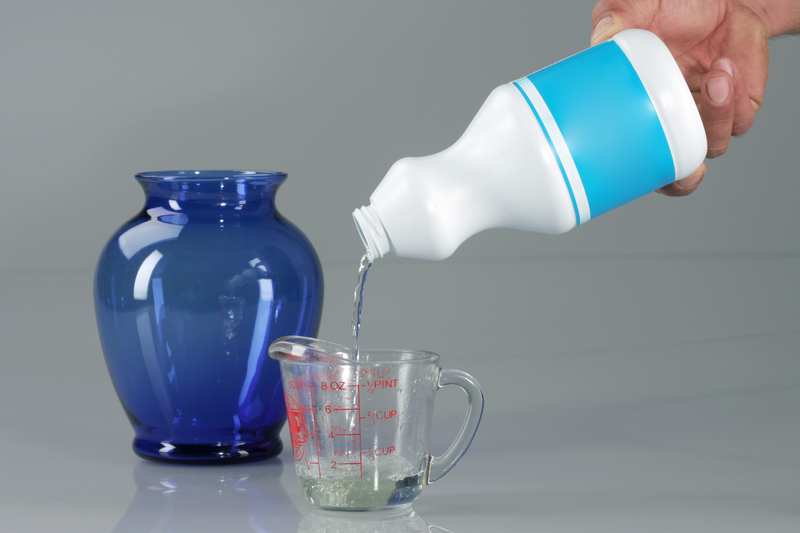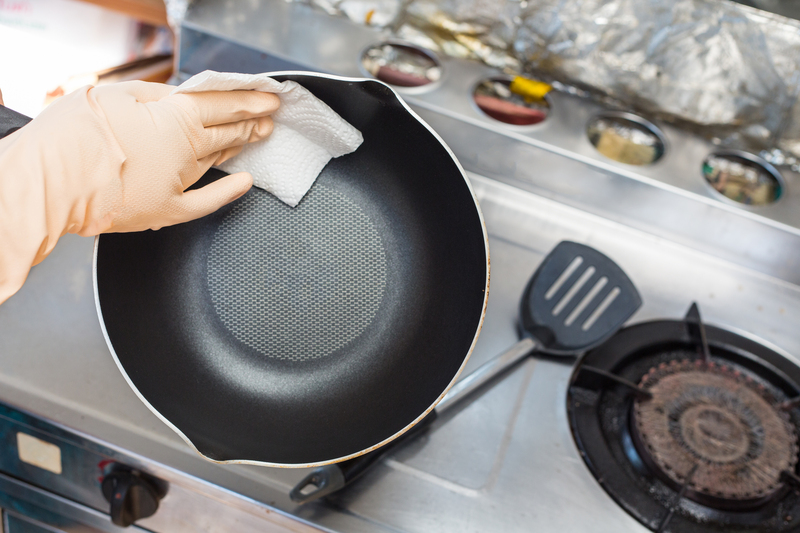Efficient Techniques for Cleaning Burnt Residue Off Your Stovetop
Posted on 26/05/2025
Efficient Techniques for Cleaning Burnt Residue Off Your Stovetop
Having a sparkling clean stovetop can instantly elevate the look and hygiene of your kitchen. However, anyone who spends time cooking knows how quickly spills and burnt-on residue can accumulate. Over time, these stains can become stubborn, making cleaning feel like an uphill battle. In this comprehensive guide, you'll discover a wide array of efficient techniques for cleaning burnt residue off your stovetop--ensuring your kitchen remains spotless with minimal effort.

Understanding Burnt Residue on Stovetops
Before exploring effective cleaning methods, it's crucial to know what you're dealing with. Burnt residue is essentially food particles, oils, and other organic matter that have been exposed to high heat and have adhered to the stove surface. Over time, these can become carbonized, forming tough black patches or sticky gunk.
Common Causes of Burnt Stovetop Stains
- Food spills during cooking
- Boil-overs from pots and pans
- Spattering oil and sauces
- Neglected routine cleaning
- High-heat usage, particularly with sugary or starchy foods
No matter the cause, removing burnt-on residue is essential for both hygiene and maintenance of your stovetop. Next, let's examine safe and efficient cleaning solutions.
Preparation: Things You Need Before Cleaning
Efficient cleaning starts with the right preparation. Here's a checklist of recommended tools and materials for tackling burnt residue on your stove:
- Baking Soda
- White Vinegar
- Lemon Juice
- Non-abrasive Scrubbing Pads or Sponges
- Microfiber Cloths
- Plastic or Silicone Scraper
- Dish Soap
- Hot Water
- Gloves (for sensitive skin)
Certain stovetop materials, such as glass, ceramic, or stainless steel, require specific attention. Always refer to your manufacturer's guidelines before using any chemical or abrasive tools.
Step-by-Step Efficient Techniques for Cleaning Burnt Residue
Let's dive into the most effective ways to remove burnt residue from your stovetop. The following strategies will help you handle everything from light stains to severely burnt-on gunk.
1. Basic Daily Cleaning for Prevention
The best way to tackle burnt residue is by preventing it from accumulating. After each use, wipe the stove while it's still slightly warm (never hot!) with a damp microfiber cloth and mild dish soap. This prevents stains from baking onto the surface, reducing overall effort.
2. Baking Soda and Vinegar: The Dynamic Duo
Baking soda is mildly abrasive and excellent for loosening burnt-on stains, while vinegar helps dissolve mineral and food deposits. Here's how to use this classic combination for efficient burnt residue cleaning:
- Sprinkle baking soda generously over the affected areas.
- Spray or pour vinegar on top of the baking soda.
- Let the mixture fizz and sit for 15-30 minutes. The reaction helps break down stubborn residue.
- Scrub gently with a non-abrasive pad or cloth in a circular motion.
- Wipe away the residue with a damp cloth and dry thoroughly.
3. Soaking Method for Stubborn Residue
If the stains refuse to budge, soaking can loosen their grip:
- Soak a towel in hot, soapy water.
- Place the towel over the burnt spots for 15-20 minutes.
- After soaking, use a plastic scraper to gently lift the softened residue away.
- Finish with a microfiber cloth and a few drops of dish soap for shine.
4. Using Commercial Stove Cleaners
For extra-tough, baked-on messes, especially on glass or ceramic stovetops, specialized stove cleaning products are available:
- Apply the cleaner according to label instructions.
- Allow ample dwell time for the product to penetrate burnt stains.
- Use a scraper or pad provided, ensuring you don't scratch the surface.
- Rinse thoroughly with a clean, damp cloth.
Note: Always ventilate your kitchen and wear gloves when handling commercial cleaners.
5. Natural Alternatives: Lemon, Salt, and More
If you prefer eco-friendly solutions, try these natural methods:
- Lemon Juice: The citric acid helps dissolve stains. Squeeze fresh lemon juice or rub a lemon half over the residue, let sit, and wipe clean.
- Salt and Baking Soda: Create a paste with equal parts salt and baking soda. The salt adds extra grit for tough stains. Scrub gently and rinse.
- Hydrogen Peroxide: Mix with baking soda for an effervescent cleaner that tackles even severe burns.
6. Dealing With Grates and Burner Covers
Grates and burner covers can accumulate burnt-on residue as well. For efficient cleaning:
- Remove grates and soak them in hot, soapy water for at least 30 minutes.
- Use a brush or abrasive sponge to scrub off the loosened debris.
- For extremely stubborn spots, apply a baking soda and water paste, let sit, then scrub.
- Rinse and dry thoroughly before placing back on the stove.
Techniques for Different Stovetop Types
Gas Stovetops
Gas ranges typically come with removable burners and metal grates. Here, most methods described above will work, but never submerge the actual gas burner head in water. Use a toothbrush and a vinegar solution to clean these parts.
Electric Coil Stovetops
For electric coil stoves, lift the coils gently. Wipe underneath with a damp sponge and mild detergent. If stubborn residues are present on the coils themselves (when cool and unplugged), use a paste of baking soda and water. Never use excessive water, as it may damage electrical components.
Glass and Ceramic Tops
Glass and ceramic stovetops are prone to scratches, so always stick to non-abrasive sponges and plastic scrapers. Use a specifically formulated glass stovetop cleaner or the baking soda-vinegar method. Finish with a microfiber cloth for streak-free shine.
Precautionary Measures and Common Mistakes to Avoid
- Avoid steel wool or metal scrapers on any stovetop--they can cause permanent scratches.
- Never use excessive water near electrical parts.
- Don't let harsh chemical cleaners sit for too long on painted or enameled surfaces.
- Always allow the stovetop to cool before cleaning to prevent burns and heat-reactive chemical fumes.
- Test new cleaning agents on a small, inconspicuous area.
Pro Tips for Keeping Your Stovetop Clean Longer
- Clean up spills promptly. The sooner you wipe up spills, the less likely they will burn onto the surface.
- Use burner liners or covers. These catch spills and make cleanup much easier.
- Wipe down the stovetop after every use rather than letting stains accumulate.
- Set a reminder for a weekly deep-clean.
- Use a splatter screen when frying or cooking sauce-heavy dishes.

Frequently Asked Questions
How can I remove thick, carbonized stains?
For severely burnt residue, use the soaking method or apply a thick paste of baking soda and hydrogen peroxide. Let it sit for an hour, then use a plastic scraper to gently lift off the stain. If that doesn't work, consider a commercial paste cleaner formulated for stovetops.
Is it safe to use oven cleaner on my stovetop?
Most oven cleaners are too harsh for glass or ceramic stovetops and can damage the finish or cause discoloration. Always use cleaners labeled safe for your specific stove material.
How often should I deep-clean my stovetop?
At a minimum, aim for a thorough cleaning once a week. However, frequent cooks and bakers may want to deep-clean every few days to prevent build-up and maintain efficiency.
Can I use vinegar every time I clean my stovetop?
Vinegar is safe for most surfaces, but if your stovetop has special coatings or finishes, too-frequent use can cause dullness over time. For daily cleaning, use diluted vinegar or a mild dish soap instead.
Conclusion: Achieving a Sparkling, Burn-Free Stovetop
A pristine stovetop isn't just an aesthetic goal--it creates a more pleasant, efficient, and hygienic cooking environment. With these efficient techniques for cleaning burnt residue off your stovetop, even the most stubborn burnt-on stains are manageable. By combining preventive maintenance, the right cleaning agents, and the appropriate methods for your stove type, you can keep your kitchen looking spotless and inviting at all times.
Remember, consistent upkeep is easier than tackling long-neglected messes. Start adopting these stovetop cleaning tips today, and enjoy the satisfaction of a clean, gleaming cooking space every time you step into your kitchen!





